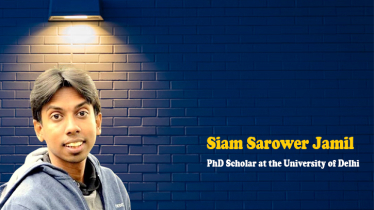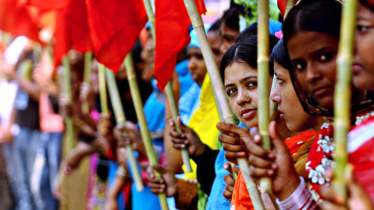
Photo: Messenger
Bangladesh, often referred to as a "climate change hotspot," is now experiencing scorching summers and extreme heatwaves due to the increasing global temperatures. Recent reports in the Dailies indicate that 2024 has set a new record as the warmest year, with average temperatures ranging from 40 to 42 degrees Celsius in all districts. The occurrence of these heatwaves has resulted in the closure of schools, disruption of agricultural activities, and a rise in health problems such as heatstroke. A significant number of individuals are experiencing heat-related illnesses, with a minimum of four fatalities documented thus far. In April 2023, the country saw a 14-day period of very hot weather, known as a heatwave, during which temperatures soared to 42.5 degrees Celsius in Rajshahi and 40.6 degrees Celsius in Dhaka.
Over the past two decades, the average daily temperatures in Bangladesh have increased by over 2.74 degrees Celsius, which is higher than the world average. The daytime temperatures in Dhaka have increased by around 2.75 degrees Celsius, surpassing the targets set by the Paris Agreement (The Daily Star, April 26, 2024). Climate experts anticipate more temperature rises in the upcoming decades, intensified by extended summers and reduced winters. Hence, it is imperative to tackle this pressing matter and protect the welfare of students in the educational system by implementing customised policy measures and constructing suitable infrastructure.
To mitigate the effects of future heatwaves on education, programs that have worked well in similar countries should be put into place. The main goals of this approach should be to change practices in education and build suitable infrastructure. Therefore, the following actions can be considered:
Adjusting the academic calendar and flexible teaching-learning practice: The academic year can be restructured to accommodate the hottest months, typically from April to May, as vacation periods in consultation with educators and experts. This would ensure that students are not exposed to extreme heat during school hours, reducing the risk of heat-related illnesses and fatigue. The revised calendar could include shorter, more intensive terms during cooler months to make up for the lost instructional time. This may involve adjusting school hours, rescheduling outdoor activities to cooler times of the day, or implementing alternative learning arrangements such as blended learning or remote learning during heatwave periods.
Infrastructure arrangement: Investing in infrastructure improvements, particularly in campuses located in areas prone to extreme heatwaves, is crucial. This includes installing air conditioning systems, improving ventilation, and utilising energy-efficient cooling technologies. These measures significantly improve the learning environment and protect students from heat-related discomfort. It is important to consider the impact of the working environment on productivity and motivation, as highlighted by the Hawthorne experiments known as 'Hawthorne effect.' Providing a comfortable and conducive atmosphere in academic buildings is essential for both students and educators.
Finding nature-based cooling infrastructure solutions: Nature-based solutions should complement technology to ensure a holistic and sustainable approach. To mitigate the impacts of heatwaves, nature-based solutions harness the inherent benefits of the natural environment. Integrating green spaces, tree planting, and urban reforestation can provide natural cooling effects, reduce ambient temperatures, and enhance the overall comfort of educational campuses. Tree plantations and urban reforestation initiatives significantly reduce temperatures on and around educational campuses. Trees provide shade, facilitate evaporative cooling, and enhance air circulation. Planting trees near buildings and outdoor learning spaces can create comfortable environments for students and educators, reducing the need for excessive air conditioning.
Design and implement projects on green roofs and living walls. Implementing green roofs and living walls in educational buildings can contribute to temperature regulation and reduce heat stress. Green roofs provide insulation, attenuate rainwater runoff, and mitigate the urban heat island effect. Vegetation-covered living walls, when integrated into both indoor and outdoor spaces, aid in cooling the surrounding air through evapotranspiration. Therefore, we should design and implement some projects that incorporate green roofs and living walls in academic buildings. Allocating additional grants and funding to these projects may help to mitigate and address the future consequences of heatwaves on education and our planet's overall well-being.
Upgrade the campus electricity supply system: Amidst the intense summer heat, many educational structures in Bangladesh face an additional obstacle: frequent power interruptions caused by voltage fluctuations due to the increased demand for air conditioning and cooling resources. The increase in demand places a greater burden on the electrical system, reducing its capacity and causing power supply disruptions. Clearly, in the past, we built several structures without conducting thorough assessments of energy demand and supply load estimates to adequately satisfy future needs. In order to resolve this problem and guarantee a continuous supply of energy during working hours, it is imperative to refurbish and replace old structures with updated installations that incorporate electrical systems of greater capacity.
When considering several power supply options, the installation of solar panels for generating electricity is also a viable option. Solar panels have a dual function, as they generate renewable energy while also providing shade on the structure's roof. This not only satisfies the need for electricity but also aids in decreasing dependence on conventional power sources, lowering carbon emissions, providing rooftop shade, and encouraging sustainable practices.
Installation of air conditioner: In recent years, many new buildings on college campuses across the country have had air conditioning installed. However, there are still old academic buildings that don't have air conditioning or good airflow. Sadly, the authorities don't always want to fix up these classes. Even worse, budget constraints often prevent the purchase of luxury items like air conditioners. The country is having a hard time with this situation because it is very hot. Some universities won't let you put in AC units, even if the money comes from the academic offices or the staff members themselves. This is because the buildings already there don't have enough electricity. But it's important to know that working in a classroom on the top floor without air conditioning, where the temperature is 40 to 42 degrees Celsius and the humidity is 40 to 50 percent, is like being in an oven. Therefore, authorities must stop viewing AC units as luxury goods and instead see them as necessities that save lives and keep students and staff healthy.
Along with the government's "smart classroom" programs, each institution should look at each classroom's air conditioning needs and also consider natural ways to cool them down. This will contribute significantly to the government's efforts to enhance the efficiency of education. This is especially true for universities, which can take on comprehensive projects to build and renovate smart classrooms with a focus on meeting the needs for air conditioning. Initially, the top-floor classrooms should receive the most attention.
Collaboration and policy support: Addressing the impact of heatwaves on education requires collaboration between government bodies, educational institutions, and relevant stakeholders. Government support is crucial in implementing policies and regulations that prioritise the well-being of students during extreme heat events. This can include developing guidelines for heatwave management in schools, providing financial assistance for infrastructure improvements, and incorporating climate resilience strategies into educational policies. Collaboration with international organisations, NGOs, and research institutions can also provide valuable expertise and resources to support heatwave mitigation efforts.
To conclude, addressing the impact of heatwaves on education in Bangladesh necessitates a comprehensive approach that encompasses various strategies. It is worth reiterating that Dr. James Hansen, a renowned climate scientist, stated, “Climate change is here; it's happening. It's time to stop waffling so much and say that this is an issue we need to be addressing."
Prioritising the well-being and education of students in the face of climate change and ensuring their resilience in the face of heatwave challenges is of utmost importance. As Sir David Attenborough, a renowned British presenter and biologist, said, “It is surely our responsibility to do everything within our power to create a planet that provides a home not just for us but for all life on Earth. The truth is: The natural world is changing.”
The writer is an associate professor of development Studies Discipline, at Khulna University, and PhD fellow, at Lingnan University, Hong Kong. He could be reached at [email protected].
Messenger/Fameema








